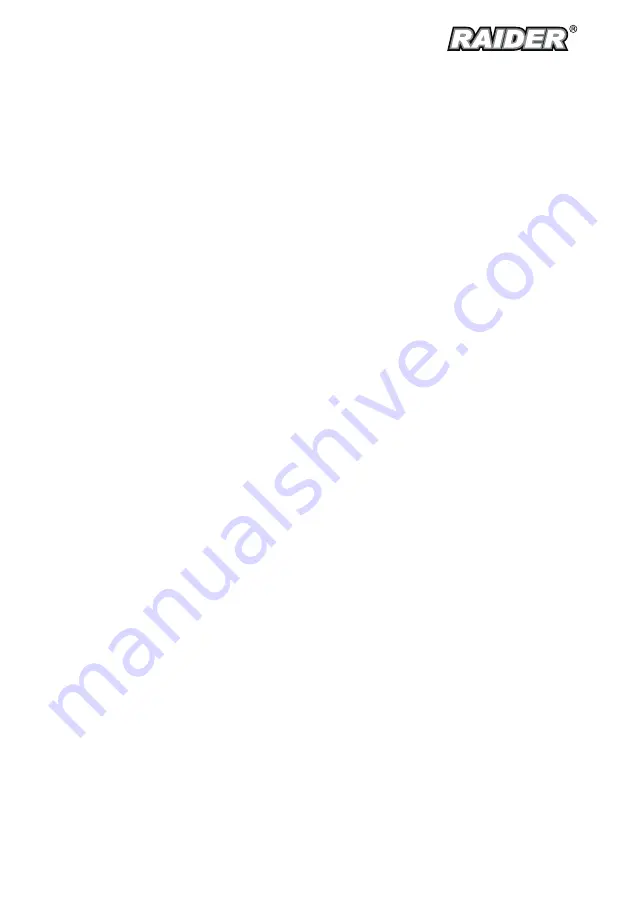
25
7. Exercise caution to avoid slipping or falling, especially when operating in reverse.
8. Thoroughly inspect the area where the equipment is to be used. Remove all doormats,
newspapers, sleds, boards, wires and other foreign objects, which could be tripped over or
thrown by theauger/impeller.
9. Always wear safety glasses or eye shields during operation and while performing an
adjustment or repair to protect your eyes. Thrown objects which ricochet can cause serious
injury to the eyes.
10. Do not operate the equipment without wearing adequate winter garments. Avoid loose
fitting clothing that can get caught in moving parts.
11.Do not wear jewelry, long scarves or other loose clothing, which could become entangled
in moving parts. Wear footwear which will improve footing on slippery surfaces.
12. Adjust collector housing height to clear gravel or crushed rock surfaces.
13. Disengage all clutches and shift into neutral before starting the engine.
14. Never attempt to make any adjustments while engine is running, except where
specifically recommended in the operator’s manual.
15. Let engine and machine adjust to outdoor temperature before starting to clear snow.
16. To avoid personal injury or property damage use extreme care in handing gasoline.
Gasoline is extremely flammable and the vapors are explosive. Serious personal injury can
occur when gasoline is spilled on yourself or your clothes, which can ignite. Wash your skin
and change clothes immediately.
17. Use only an approved gasoline container. Extinguish all cigarettes, cigars, pipes and
other sources of ignition.Fill fuel tank outdoors with extreme care. Never fill fuel tank
indoors.
18. Never remove gas cap or add fuel while the engine is hot or running. Allow engine to
cool at least two minutes before refueling. Never over fill fuel tank. Fill tank to no more than
1/2 inch below bottom of filler neck to provide space for fuel expansion. Never fill containers
inside a vehicle or on a truck or trailer bed with a plastic liner. Always place containers on
the ground, away from your vehicle, before filling. When practical, remove gas-powered
equipment from the truck or trailer and refuel it on the ground. If this is not possible, then
refuel such equipment on a trailer with a portable container, rather than from a gasoline
dispenser nozzle.
19. Keep the nozzle in contact with the rim of the fuel tank or container opening at all times,
until refueling is complete. Do not use a nozzle lock-open device. Replace gasoline cap and
tighten securely. If gasoline is spilled, wipe it off the engine and equipment. Move machine
to another area. Wait 5minutes before starting the engine.
20. Never store the machine or fuel container inside where there is an open flame, spark
or pilot light (e.g. furnace, water heater, space heater, clothes dryer etc,). Allow machine
to cool at least 5 minutes before storing. If fuel is spilled on clothing, change clothing
immediately.
Instructions for safety operation with the snow thrower
1. Do not put hands or feet near rotating parts, in the auger/impeller housing or chute
assembly. Contact with the rotating parts can amputate hands and feet. Keep clear of the
discharge opening at all times.
2. After striking a foreign object, stop the engine (motor), remove the wire from the spark
plug, disconnect the cord on electric motors, thoroughly inspect the snow thrower for any
damage, and repair the damage before restarting and operating the snow thrower.
Summary of Contents for RD-GST03
Page 20: ...20 www raider bg ...
Page 21: ...21 ...
Page 36: ...36 www raider bg ...
Page 50: ...50 www raider bg ...
Page 51: ...51 PART LIST ...
Page 67: ...67 ...
Page 71: ...71 ...
















































